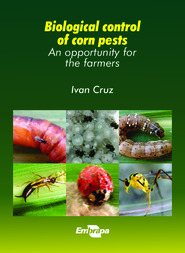Biological control of corn pests: an opportunity for the farmers.
Biological control of corn pests: an opportunity for the farmers.
Author(s): CRUZ, I.
Summary: Brazilian agriculture has shown significant results in recent years, largely due to the use of new technologies, including superior genetics and good agricultural practices. Despite greater knowledge useful for decision making regarding environmental biotic and abiotic factors, super harvest and productivity gains, Brazilian agriculture still suffers from losses resulting from pest injuries. In order to avoid or mitigate economic losses, the common alternative is still through frequent spraying with chemicals, whose action is only on the existing population or target insects, at a given time. Considering the residual period of the chemicals, usually very short, and the continued influx of pests, there is usually a need for further spraying for control of them. In addition to increasing the production cost of economic activity, such additional applications can favor the emergence of populations resistant to the products and at the same time reduce the population of useful species, such as the natural enemies of phytophagous species, or those that pollinate or decompose organic matter. Due to these negative factors, there is a significant movement by society, agencies and professional agents asking for a drastic reduction in the use of agricultural practices with negative side effects for the environment and human health. An alternative in the specific case of phytophagous species is the use of biological control, whose relevance was institutionally valued by the National Bioinputs Program (Decree number 10.375, of May 26, 2020), coordinated by the Ministry of Agriculture, Livestock and Supply of Brazil. Due to these demands and actions, the growing number of biological products in Brazil, marketed and under development by different companies, is visible. Objectively, product availability is no guarantee of success in pest control; but, of course, success can happen as soon as there is adequate training and use of the new agricultural processes associated with each biological product. This strategic change in the way of controlling pests has the support of various segments of society, considering that the reduction or elimination of products that cause direct and indirect damage to the environment is the perception, desire and expectation of both the agricultural producer and the consumer, notably urban dwellers. This theme is part of the context and dynamics of intelligent and creative movements for food security, with productivity and sustainability. Therefore, this publication was specially prepared to collaborate with farmers, technicians and public and private extension workers, in the recognition of beneficial organisms and how to effectively use them on the agricultural property.
Publication year: 2022
Types of publication: Books
Unit: Embrapa Maize & Sorghum
Observation
Some of Embrapa's publications are published as ePub files. To read them, use or download one of the following free software options to your computer or mobile device. Android: Google Play Books; IOS: iBooks; Windows and Linux: Calibre.
Access other publications
Access the Agricultural Research Database (BDPA) to consult Embrapa's full library collection and records.
Visit Embrapa Bookstore to purchase books and other publications sold by Embrapa.

